Wondering how to repair a corrupted installation on Windows 10?
Understandably, installing new software on your PC is a pretty risky activity as malware can be hidden. But Microsoft has taken a few measures to protect its users from any danger.
Although Microsoft OS has developed into its most stable version over time, there are still quite a few incidents where you may have to suffer from system corruption. It becomes the worst-case scenario when the issue occurs during Windows 10 installation.
Consequently, you may be falling prey to various driver errors, BSODs, or even a corrupted installer, causing your system to get trapped into a loop. If you’re thinking there’s no other solution to this problem other than reformatting your PC after backing up your data, think again.
Continue reading this guide and learn about the numerous fixes!
1. Use the SFC Tool.
Windows offers a few built-in tools you could utilize to repair a corrupted installation on Windows 10. The number one on the list, which is also extremely useful, is the System File Checker or SFC tool that runs on the Windows command line.
Offering you maximum convenience, SFC inspects the entire system for any damaged files and, upon diagnosis, repairs them automatically. You should boot your PC into Safe mode for optimum results even though this step is not necessary.
Follow the steps below to perform the SFC scan:
- Firstly, press the Windows key from your keyboard.
- Then, type cmd in the Search bar and select Run as Administrator.
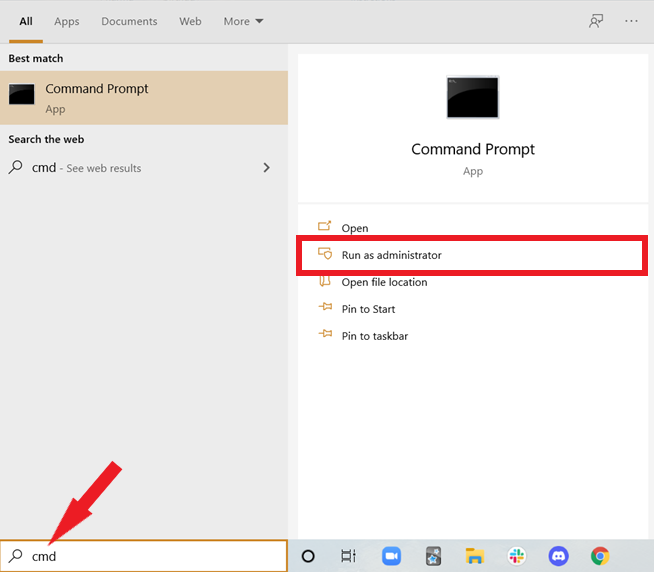
- Once the program launches, type the following command and hit Enter.
sfc /scannowYour computer will take over everything from here. All you need to do is wait patiently for the process to finish. Meanwhile, you can use your computer for other tasks. Just make sure not to close the Command Prompt or interrupt the operation.
If the repair was successful, you’d get the message “Windows Resource Protection found corrupt files and successfully repaired them.” Otherwise, you’ll need to try out some of the other fixes mentioned in this guide.
2. Use the DISM Tool.
As mentioned above, the SFC tool may not always work. In that case, the DISM tool may come handy. Primarily, it repairs the .WIM file types. For the DISM to operate, your system requires a USB flash drive, an optical disk, or any other installation medium.
By following this method, you’ll be able to diagnose whether a corrupted installation exists on your PC and, if so, the process for repairing the damage.
Here’s what you need to do:
- To begin, press the Windows key and type ‘cmd‘ in the Search field.
- Next, click on the Run as administrator option to avail full privileges. Alternatively, you could run Windows Powershell as administrator and follow the same steps.
- Once it opens, type the following command, then press the Enter key from your keyboard:
DISM /Online /Cleanup-Image /RestoreHealthAfter that, DISM will display a report informing you about the issue. If the system fails, you will get an error with code 0x800f081f.
3. Run the SFC Scan Before Windows Starts.
If you start windows like you usually do and then perform an SFC scan, your system will scan and repair all types of system files. So, in situations where you would like to scan and repair protected system files, you’ll have to run the scan before your computer starts.
Here’s how to do it:
- Start by clicking on the Start menu located at the bottom left corner.
- Now, select Power and click on Restart while holding down the Shift key.
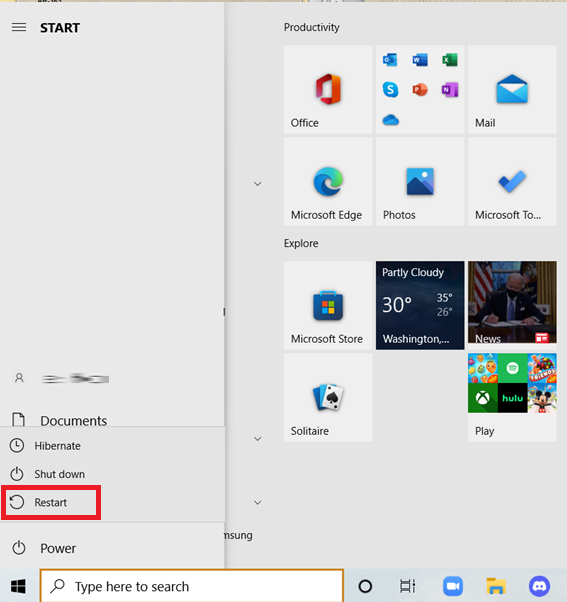
- When the blue screen with a few options appears, choose Troubleshoot.
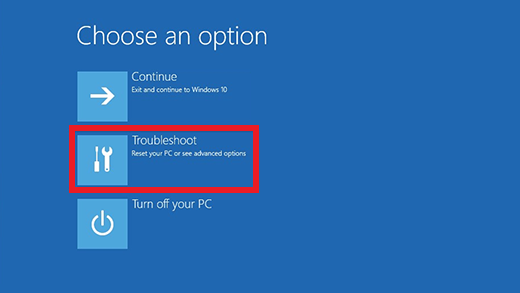
- Next, go to Advanced Options and click on Command Prompt.
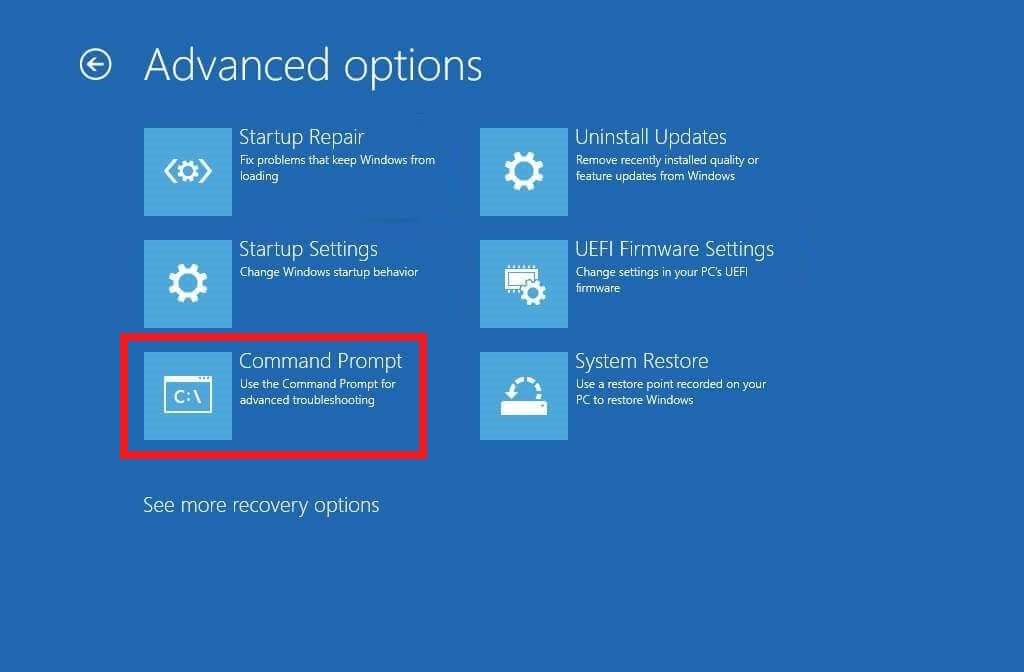
- Then, enter your username and password if prompted.
- When Command Prompt opens, type the following command and press Enter.
wmic logicaldisk get deviceid, volumename, description- Note down the Volume Name and System Reserved drive, then run the following command. Remember to replace the letter “C” with the System Reserved drive and “D” with the Volume Name.
sfc /scannow /offbootdir=C:\ /offwindir=D:\Windows- When the scan completes, restart your PC.
Hopefully, this will repair a corrupted installation on Windows 10. If not, go through the following method.
4. Check if the Component Store is Corrupted.
When you suspect that your Windows installation has corrupted, you need to analyze where the problem actually lies. Some common signs for corrupted Windows include frequent crashes and system freeze. However, this method won’t work if your Windows installation is corrupted to a point where it cannot even start.
Here’s all you need to do:
- Firstly, launch Command Prompt under administrator permissions.
- When the window opens, run the following command:
DISM.exe /Online /Cleanup-image /RestorehealthComponent Store contains essential files that Windows uses to repair itself. So, if the above command doesn’t work, it implies that the Component Store is corrupted, and you’ll be left with no other option to reinstall Windows on your PC.
Fortunately, you can reinstall your Windows 10 without affecting your personal data. For that purpose, you’ll need a Windows CD key apart from the installation DVD, of course. However, if you’ve lost it, you can download Produkey for free and reclaim your product key.
5. Repair Your Windows.
If you can’t even access your desktop, this solution is exactly what you need. By following through with this method, you’ll be able to repair a corrupted installation on Windows 10 in no time.
Keep in mind that you’ll require a Windows Installation DVD with the correct bit count. The version of the DVD does not matter here and can be different from your license.
Below are the steps you need to follow:
- To get started, boot into Windows from the Installation DVD. For that, your PC should be set to boot into the optical drive before the hard drive. If not, you can change the settings through the BIOS menu.
- Press any key upon startup, and a Windows Installer language selection box will appear on your screen.
- Now, select a language and keyboard and click on Next.
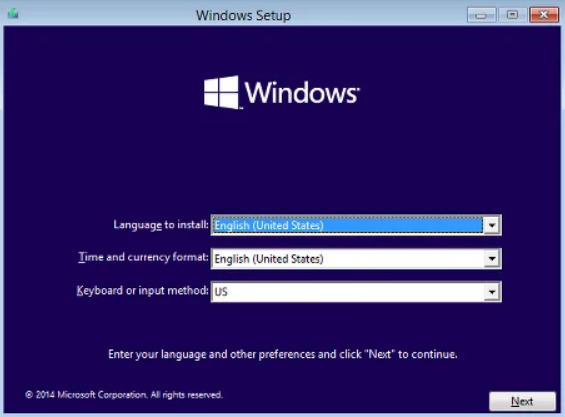
- Instead of clicking on the Install Now button, go to Repair your computer at the bottom left corner.
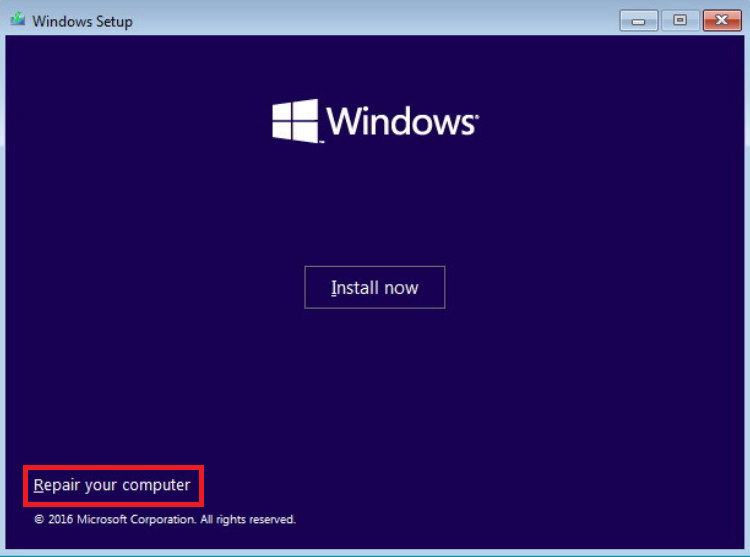
- After that, click on Next.
- In the following screen, choose the first option and note down the letter for System drive in the text box.
- Next, click on Command Prompt.
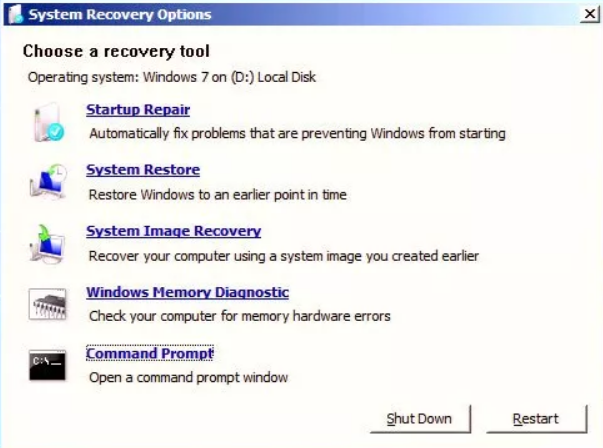
- Then, to run a scan for your system files, enter the following command in the Command Prompt. Replace [DRIVELETTER] with the drive letter you noted earlier.
sfc /scannow /offbootdir=[DRIVELETTER]:\ /offwindir=[DRIVELETTER]:\windows- If your computer finds errors, you’ll need to repeat the steps until all of them are eliminated from the system.
- After that, exit the Command Prompt click on Restart. Remove the DVD and restart your computer normally.
6. Perform A Startup Repair.
If your Windows fails to boot normally, you can perform a system repair. This will resolve basic system problems that might be blocking your PC to boot successfully.
Simply follow the steps below:
- Click on the Windows logo at the bottom left corner of your screen to start.
- Then, click on the Power icon and choose Restart while pressing the Shift key.
- Next, click on Troubleshoot, Advanced Options, and Startup Repair to initiate the process.
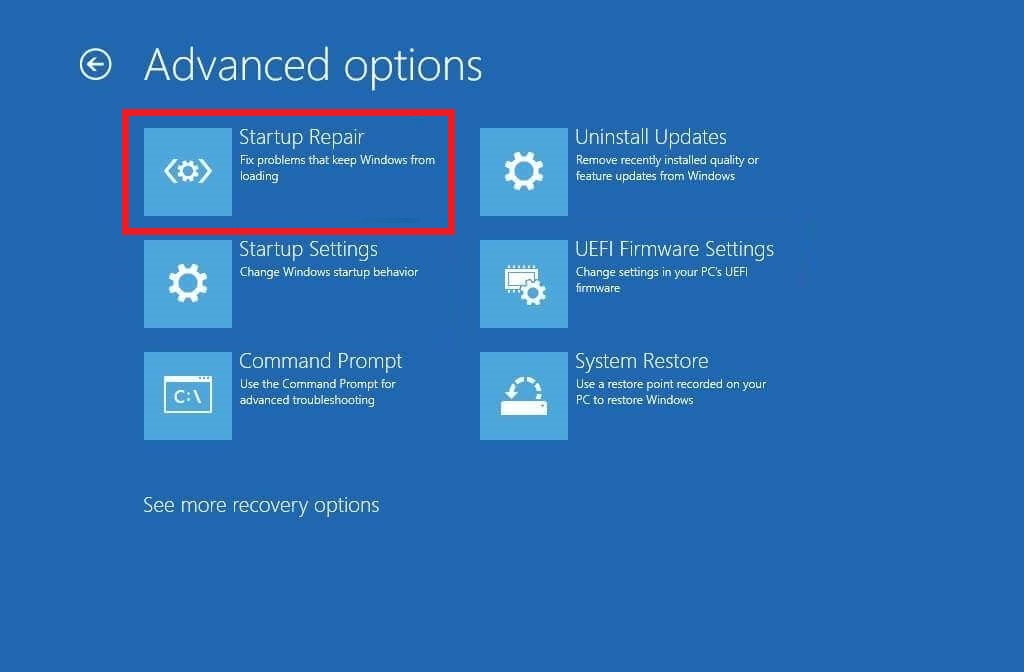
After that, wait patiently for the process to finish and hope that it successfully repairs a corrupted installation on Windows 10.
7. Restore Your System.
If none other methods turn out to be effective, you can restore your system to a restore point. But this solution would only work if you’ve enabled System Restore on your PC and have created a restore point before encountering the corrupted installation issue.
Occasionally, Windows OS or some other applications automatically create a restore point. So, even if you never created one yourself, you may want to try out this method. Hopefully, you’ll be able to repair a corrupted installation on Windows 10 by using the Windows Restore System.
8. Reset Your Windows.
Your last resort to repair most Windows-related errors, including corrupted installation, is to reset your Windows. Your computer will get back its default settings, and all the installed programs will be automatically deleted.
Although you’ll be asked to choose whether to keep your files or delete them, it is recommended to store a backup on an external hard drive just in case. This is by far the most effective method to fix all types of issues.
This concludes our guide on how to repair a corrupted installation on Windows 10. For further queries, utilize the comment section below. We’ll be more than happy to assist you further.
If this guide helped you, please share it. 🙂





